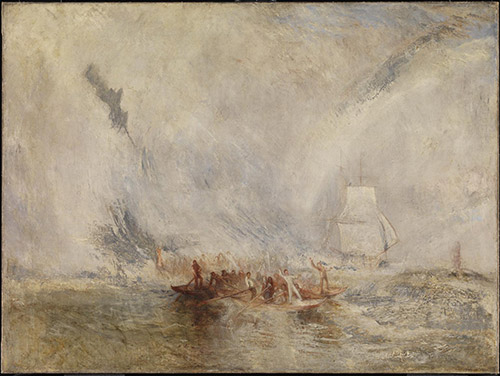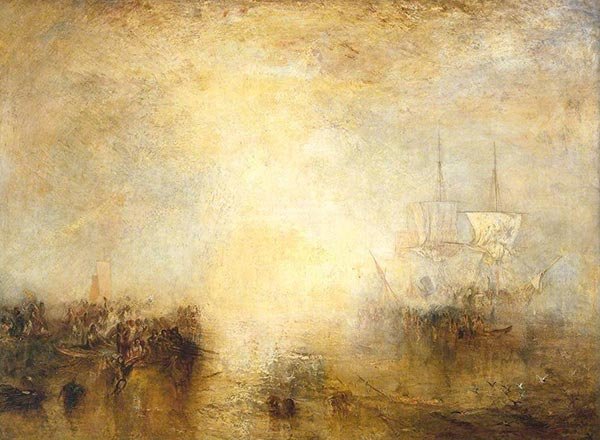Whaling and man’s struggle with nature were the dominant themes of Herman Melville’s iconic Moby-Dick, first published in 1851. Just before its publication, between 1845 and 1846, the Royal Academy in London exhibited a few of one iconic artist’s last seascapes.
His canvases confounded critics with their tumultuous surges of color, expressive and abstracted brushwork, and brilliant energy. Nearing the end of his career, Joseph Mallord William Turner (1775-1851) — one of greatest British Romantic artists — would paint a short series of four whaling scenes that formed the subject of an exhibition at the Royal Academy in London. The four paintings are now part of a focus exhibition at the Metropolitan Museum of Art in New York City, marking the first time the pictures have been shown together since 1846.

J.M.W. Turner, “Whalers,” circa 1845, oil on canvas, 36 1/8 x 48 1/4 in. (c) MET 2016
Although Turner died in 1851 — the year of Moby-Dick’s publication — the exhibition seeks to “explore connections between Turner’s whaling scenes and the novel,” the museum states. “It is not certain that Melville saw the paintings when he first visited London in 1849, but he was unquestionably aware of them. Aspects of Melville’s prose bear a striking kinship to Turner’s style and to the criticism that it incited.”

J.M.W.Turner, “Whalers,” circa 1845, oil on canvas, 35 3/4 x 48 in. (c) Tate Britain 2016
Equally exciting is the show’s inclusion of carefully selected watercolors, books, and quotes that “will offer insight into Turner’s paintings and their possible relationship with Melville’s text. Though modest in size, the exhibition will give viewers an opportunity to engage with the output of two great 19th century artists, and to assess for themselves whether the British painter inspired one of the crowning achievements of American literature.”

J.M.W.Turner, “Hurrah! for the Whaler Erebus! Another Fish!,” circa 1845, 35 x 48 in. (c) Tate Britain 2016
“Turner’s Whaling Pictures” opens on May 10 and will hang through August 7. To learn more, visit the Metropolitan Museum of Art.
This article was featured in Fine Art Today, a weekly e-newsletter from Fine Art Connoisseur magazine. To start receiving Fine Art Today for free, click here.








